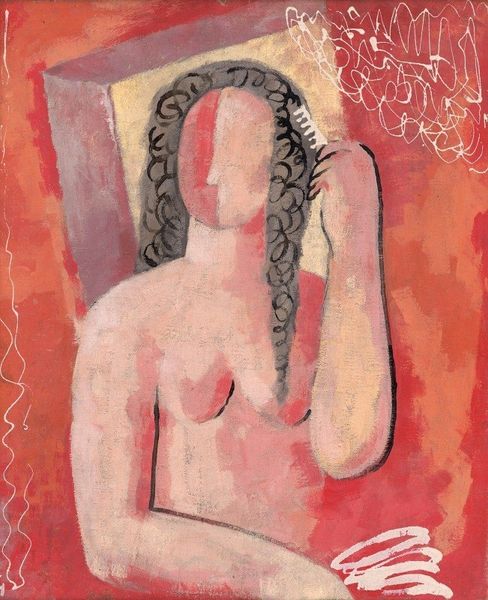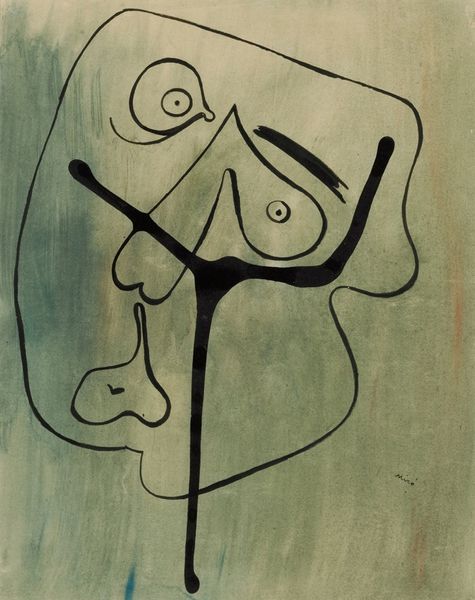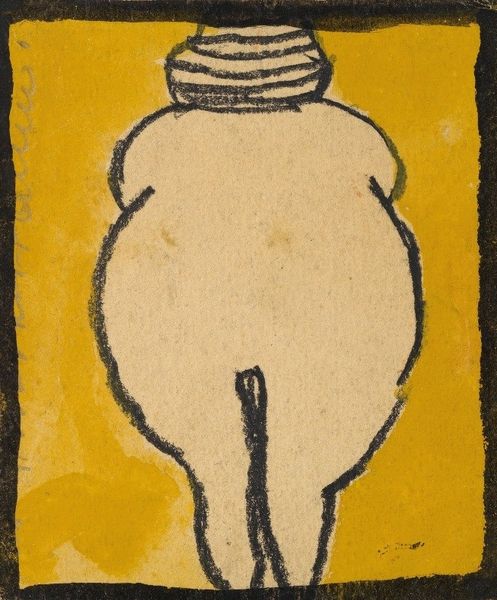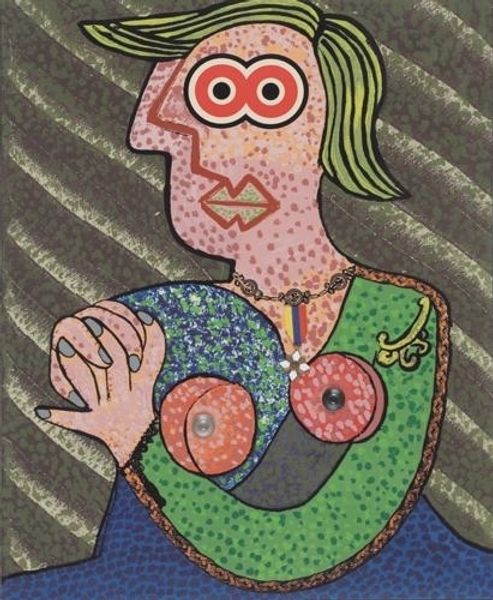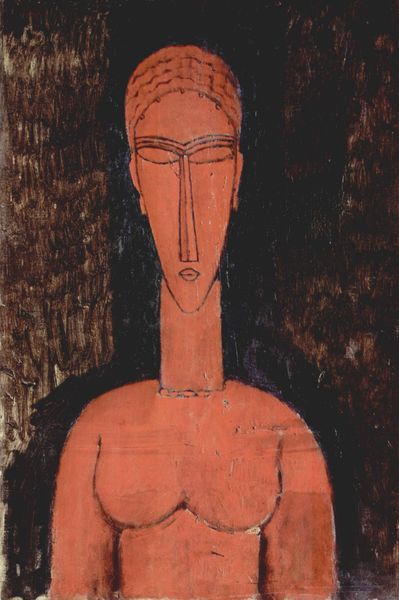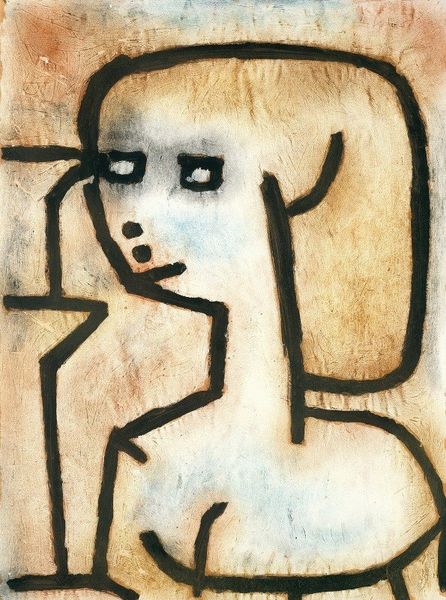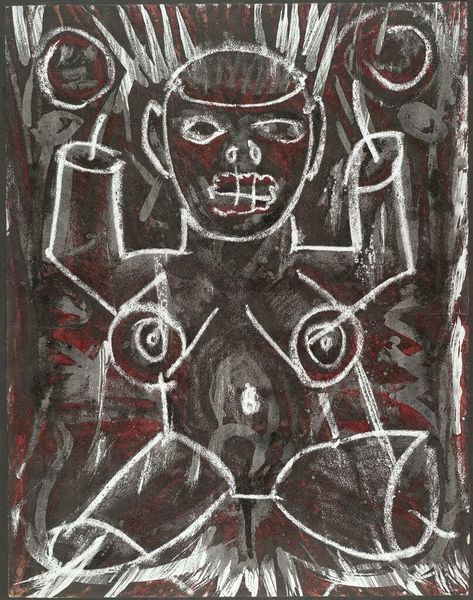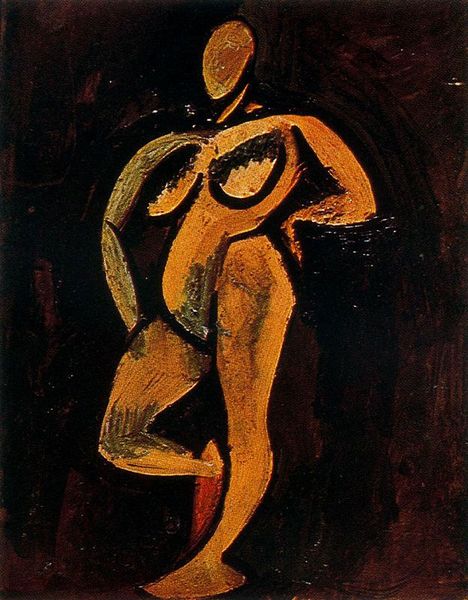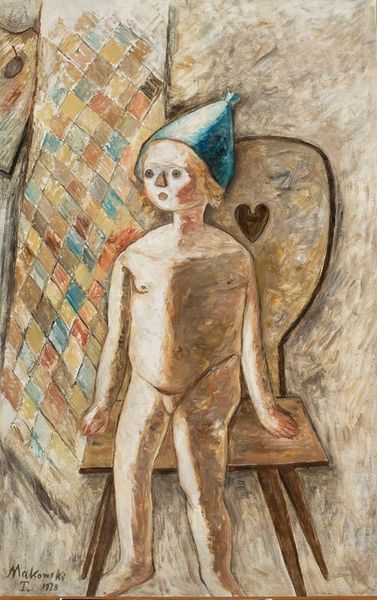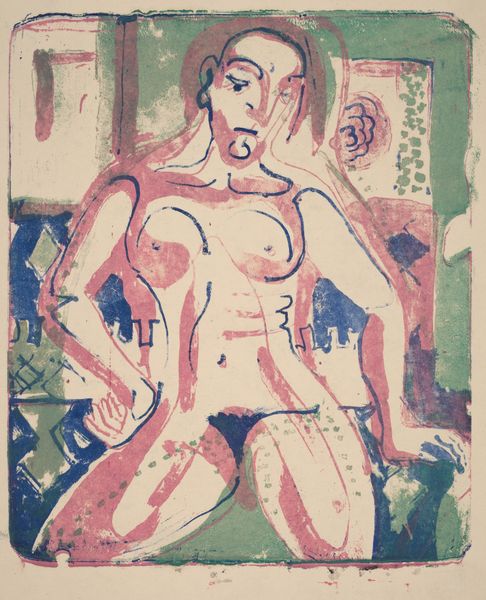
drawing, pastel
#
portrait
#
drawing
#
outsider-art
#
figuration
#
pastel chalk drawing
#
pastel
Dimensions: overall: 32.5 x 24.8 cm (12 13/16 x 9 3/4 in.)
Copyright: National Gallery of Art: CC0 1.0
Curator: "Cycliste Nue" or "Nude Cyclist", created in 1944 by Jean Dubuffet...I'm always fascinated by Dubuffet's raw approach. What’s your initial take on this pastel chalk drawing? Editor: It's jarring, to be honest. It pushes boundaries of what we might consider traditionally "beautiful," doesn't it? The figure's so raw, so unidealized, almost deliberately awkward. Curator: Exactly! That’s what draws me in. Dubuffet was deeply suspicious of academic art, you know? He wanted to capture something more primal, more direct from the soul. He was fascinated by children's art, the art of the mentally ill...Art Brut, as he termed it. There's this incredible childlike wonder with a subversive twist. The directness of the execution emphasizes immediacy... a rejection of classical notions. Editor: Right. We must think about the cultural and political context here, too. The nude subject challenges traditional patriarchal representations of the female form by depicting them without a trace of academic aesthetic conventions. We must think, too, about how the immediate post-war period sought to deconstruct bourgeois values. Curator: Absolutely, and there's humor too! A nude person, sort of greyed out in color, riding a child's bicycle. Look at the size of the breasts compared to the body -- and how low the handlebar and saddle sit relative to them! You wonder what exactly the cyclist might be riding toward. The perspective's flattened, deliberately unschooled... and yet, isn't there a strange poetry to it all? A strange whimsy? Editor: I see what you mean, but let's not overlook the potential for other readings. Does the figure perhaps represent freedom, and the cycling symbolize liberation and bodily autonomy from conservative and patriarchal aesthetics? Are the very raw depictions of the body inherently acts of radical social importance? It provokes these questions, for sure. Curator: Well, Dubuffet wouldn't give you an easy answer! His work often felt like a dare, an invitation to abandon preconceived notions. Editor: Precisely! It disrupts art historical power structures while speaking to human vulnerability. Curator: It makes me think that perhaps, in the rawest forms, we reveal truer selves to each other than ever before, maybe especially during moments of societal turmoil. What you get is what you get, here, in crayon on paper. Editor: A powerful and moving piece...one that demands consideration and questioning from a feminist lens of thought. Thank you for providing your vision.
Comments
No comments
Be the first to comment and join the conversation on the ultimate creative platform.
